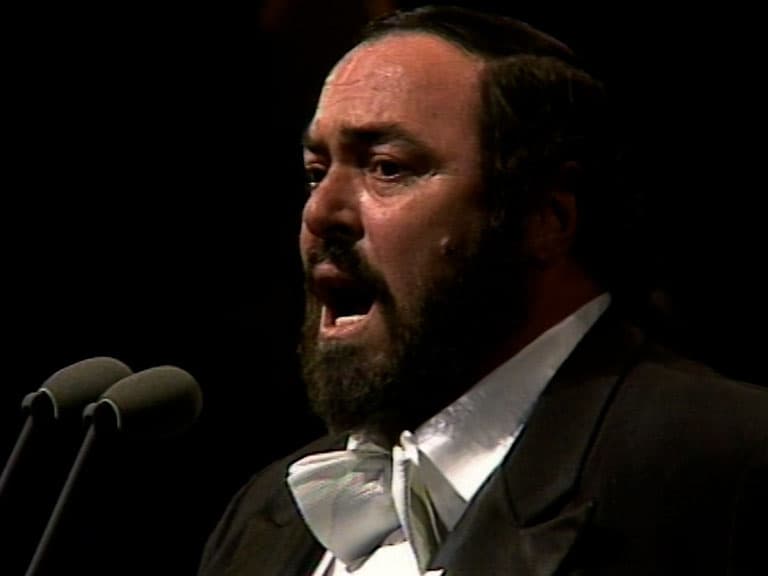Luciano Pavarotti
Streaming Now
About Luciano Pavarotti
Opera singer Luciano Pavarotti (1935–2007) was best known for his extraordinary vocal tone and effortless high Cs, bringing opera from elite concert halls to stadiums worldwide.
Born in Modena, Italy, Pavarotti rose to international fame in the 1960s, quickly becoming a household name through performances in La Bohème, Turandot, Rigoletto, and Lucia di Lammermoor, and his powerful renditions of ‘Nessun Dorma’ and ‘O Sole Mio’.
As part of the historic Three Tenors alongside Plácido Domingo and José Carreras, he helped redefine the global reach of opera. Beyond the stage, Pavarotti was a humanitarian, philanthropist, and educator who believed in the power of music to unite.

What was Pavarotti’s vocal range?
Pavarotti was a lyric tenor best known for his upper register, clarity of tone, and effortless singing of high Cs, a hallmark of the bel canto tenor repertoire.
What are some of Pavarotti’s most famous performances?
Pavarotti’s concert highlights include ‘Nessun Dorma’ from Turandot and ‘La donna è mobile’ from Rigoletto.
Did Pavarotti only sing opera?
While classically trained, Pavarotti was also a crossover artist. He collaborated with artists like Bono, Sting, and Céline Dion, helping bring opera to the mainstream without compromising its artistry.
Where is the Pavarotti Museum based?
The Casa Museo Luciano Pavarotti Museum is based in Modena, Italy, offering fans a chance to explore his life, legacy, and personal items in the home where he spent his final years.








